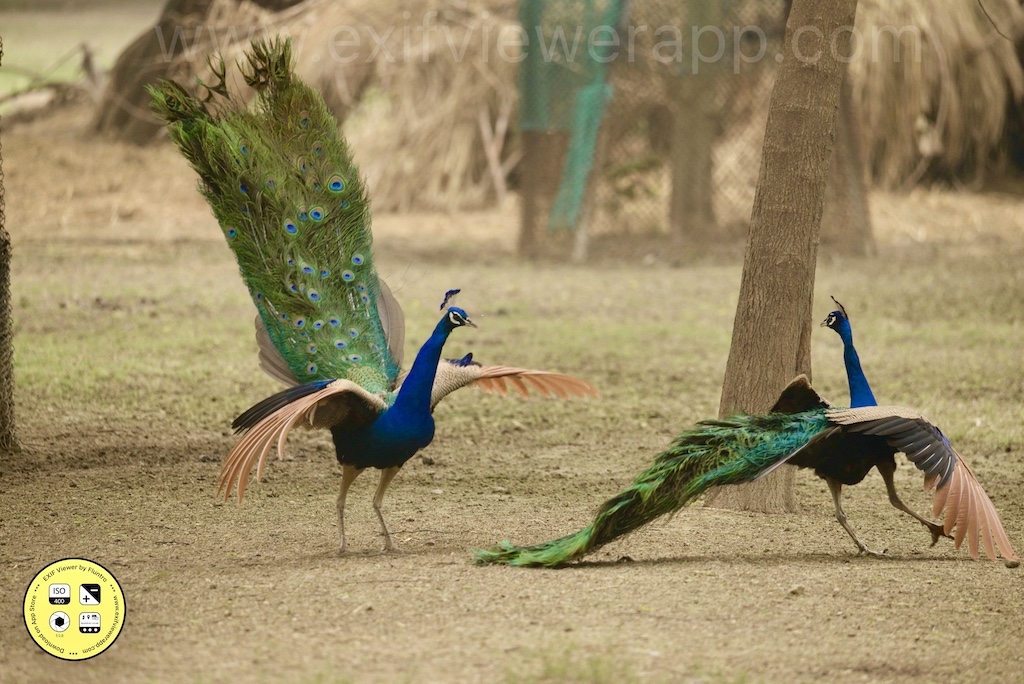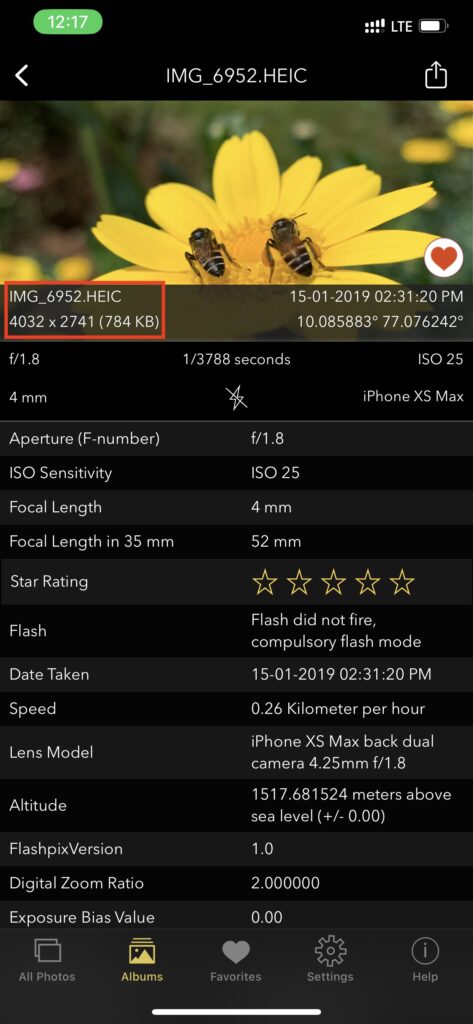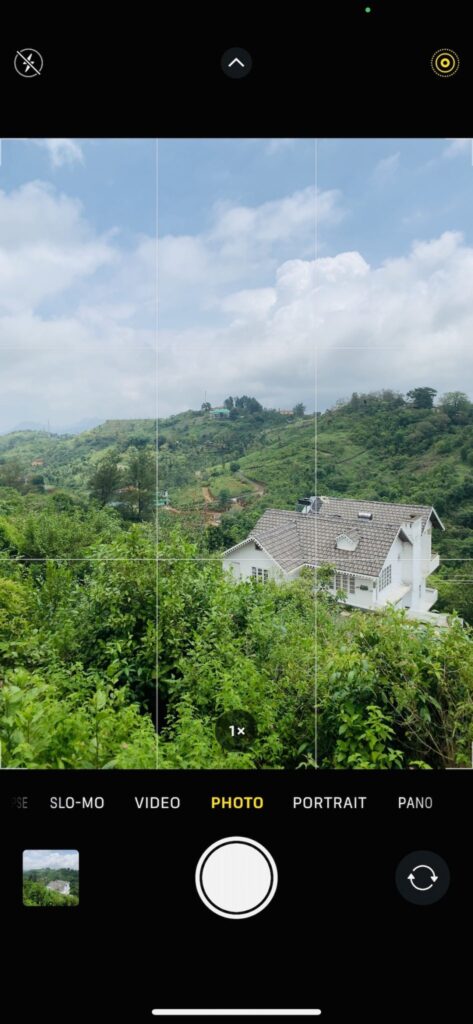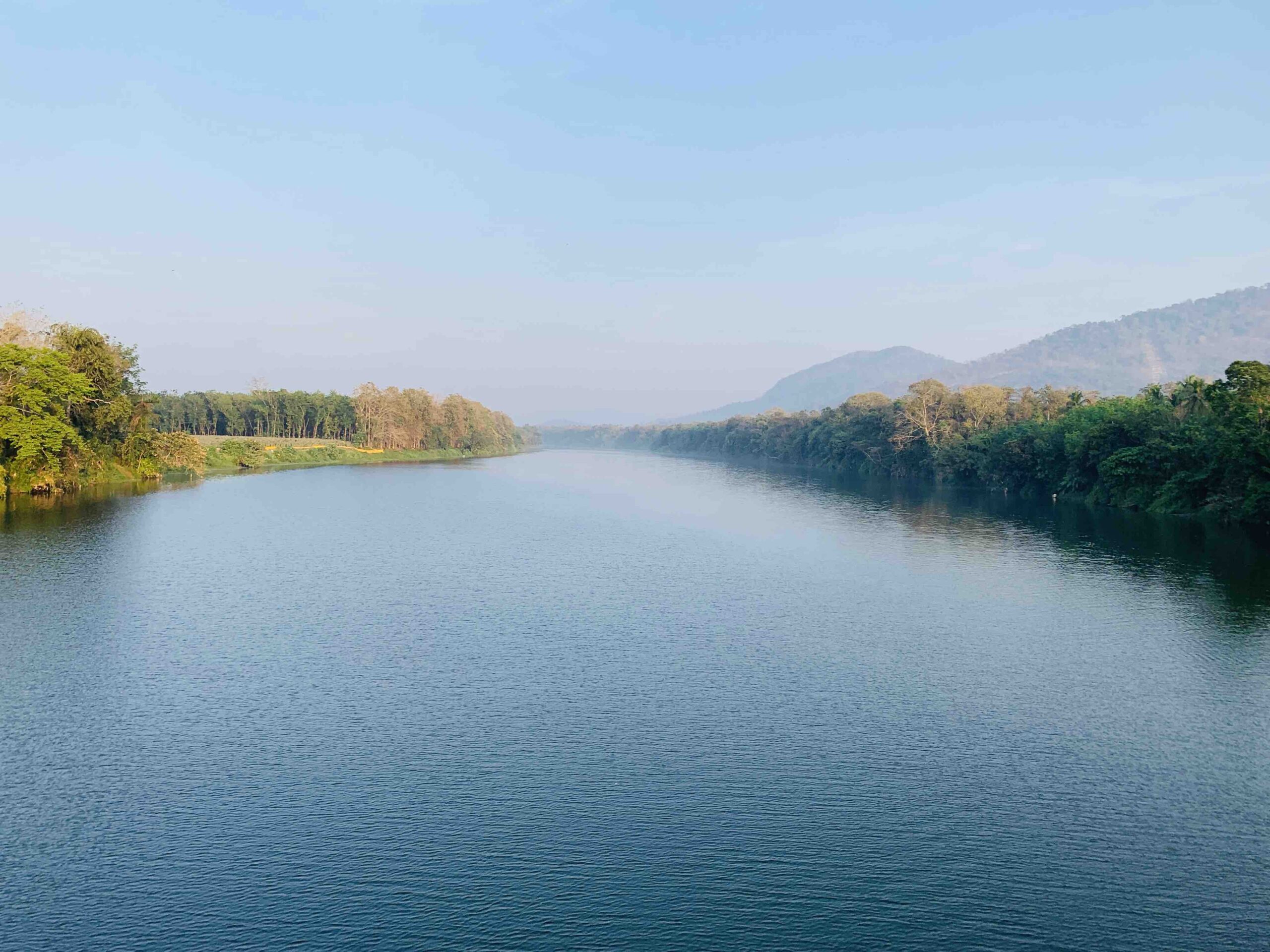In an era where smartphones have become the primary tool for capturing moments, mastering the art of iPhone photography can significantly enhance your visual storytelling. With the right techniques and a creative mindset, you can turn ordinary scenes into captivating works of art. From mastering lighting to exploring advanced editing tools, this comprehensive guide will empower you to harness the full potential of your iPhone’s camera. Discover how to revolutionize your photography skills and infuse your unique vision into every shot.
1. Understanding iPhone camera settings:
Here are some comprehensive overview of the various settings and features to optimize your shooting experience.
Understanding Focus and Exposure Control:
- By tapping on different areas of the screen, you can adjust the focus and exposure settings to ensure that your subject appears sharp and well-lit. Understanding how to balance these settings is crucial for achieving well-exposed and visually appealing photographs, especially in varying lighting conditions.
- Example: When taking a photo of a subject against a bright background, tapping on the bright background on your iPhone screen can help adjust the exposure, ensuring that both the subject and the background are properly exposed, thus creating a well-balanced and visually appealing image.


Screenshot of Photos app
Exploring Different Shooting Modes (e.g., Portrait, Pano, Time-Lapse):
- Each shooting mode is designed for specific scenarios. Portrait mode, for instance, allows you to capture professional-looking photos with a shallow depth of field, while Pano mode lets you capture sweeping panoramic vistas. Time-Lapse mode enables you to create captivating videos that condense extended periods into short, dynamic clips.
- Example: Utilizing the Portrait mode when taking a picture of a friend can create a beautifully blurred background, emphasizing the person’s face and making them stand out. Using the Pano mode while capturing a scenic landscape can help you stitch together multiple images seamlessly, resulting in a breathtaking panoramic view.


Shooting Mode: Portrait

Shooting Mode: Panorama
Optimizing HDR (High Dynamic Range) Mode:
- HDR mode enables the camera to capture a more extensive range of tones and colors, particularly in scenes with high contrast. It combines multiple exposures to create a single, well-balanced image with enhanced detail and color accuracy, making it ideal for landscapes and scenes with challenging lighting.
- Example: When photographing a sunset, enabling HDR mode can help capture the vibrant colors of the sky while retaining the details in the darker areas, allowing for a well-balanced and stunning representation of the dramatic lighting.

Utilizing Burst Mode for Dynamic Shots:
- Burst mode allows you to capture a series of rapid-fire shots by holding down the shutter button, ensuring you don’t miss any action or movement. It’s particularly useful for capturing fast-paced moments, such as sports events or playful interactions, and provides you with a selection of images to choose from afterward.
- Example: Using burst mode while photographing a soccer match allows you to capture the entire sequence of a goal, ensuring you don’t miss the crucial moment when the ball hits the net, and providing you with a selection of shots to choose from, including the players’ reactions.


Shooting Mode: Burst Mode
Harnessing the Creative Potential of Live Photos:
- Live photos add an interactive element to your still images by capturing a brief video clip alongside the photograph. This feature brings your images to life, allowing you to preserve the moments just before and after the shot, which can be a delightful and engaging way to capture memories and add a touch of animation to your gallery.
- Example: Taking a live photo of a child blowing out birthday candles captures the joyous moment in a more dynamic way, preserving the excitement leading up to the moment of blowing and the subsequent celebration, thus adding an engaging touch to the traditional still image.
Understanding File Formats and Resolution Settings (e.g., HEIC vs. JPEG):
- Knowing the differences between file formats, such as HEIC and JPEG, and selecting the appropriate resolution for your intended use is essential for balancing image quality and file size. Understanding the advantages and disadvantages of each format and resolution ensures that your photographs remain high-quality while optimizing storage efficiency on your device.
- Example: Choosing the HEIC format for your vacation photos can preserve image quality while optimizing storage space on your iPhone, allowing you to store more images without compromising on the resolution and details, compared to the standard JPEG format.


Screenshot from EXIF Viewer by Fluntro App displaying .heic and .jpg file name
2. Mastering composition and framing:
Mastering composition and framing is a fundamental skill that can significantly elevate the impact of your photographs. It involves employing various proven techniques to create visually compelling and balanced compositions that capture the viewer’s attention and guide their gaze through the image. By understanding these techniques and principles, you can effectively communicate your intended message and evoke specific emotions within your audience.
Rule of Thirds and Gridlines:
- Applying the rule of thirds involves dividing your frame into a 3×3 grid and strategically placing key elements along the gridlines or at their intersections. This technique helps create a balanced and visually appealing composition that draws the viewer’s eye to the focal points, making the image more engaging and dynamic.
- Example: Imagine you’re capturing a landscape with a breathtaking sunset. Instead of centering the sun, use the rule of thirds to place it along one of the upper gridlines. This will create a more balanced composition with the sun as a focal point and the foreground or horizon taking up the lower two-thirds of the frame.

Rule of Thirds


Gridlines
Symmetry and Patterns:
- Utilizing symmetry and patterns in your compositions can create a sense of harmony and balance, leading to visually striking images. Whether it’s capturing architectural details, natural landscapes, or everyday objects, incorporating symmetrical elements or repetitive patterns can add a sense of rhythm and aesthetic appeal to your photographs.
- Example: When photographing a geometrically designed building, like a skyscraper, focus on capturing its symmetrical details. The repeated patterns of windows and architectural elements can result in a visually striking image that highlights the building’s beauty and precision.

Leading Lines and Perspective:
- Incorporating leading lines, such as roads, fences, or rivers, can guide the viewer’s gaze and create a sense of depth and dimension within the image. Additionally, experimenting with different perspectives, such as low-angle or high-angle shots, can offer a unique viewpoint and imbue the composition with a distinct narrative and emotional impact.
- Example: In a forest scene, use a winding trail as a leading line. By positioning the camera at a low angle and allowing the path to lead into the distance, you create a sense of depth, drawing the viewer into the image, and conveying the feeling of embarking on an adventure through the woods.


Frame within a Frame:
- Using natural elements or architectural structures as frames within your composition can add depth and layers to your image, drawing the viewer’s attention to the main subject. This technique not only enhances the visual interest of the photograph but also creates a sense of context and immersion, making the viewer feel more connected to the scene.
- Example: If you’re photographing a traditional window with an interesting view, position yourself so that the window frames the scene outside. This approach adds context and depth to the image, as if the viewer is peering into another world through the window.
Negative Space:
- Intentionally incorporating negative space around your subject can create a sense of simplicity and emphasize the main focal point. By allowing the subject to breathe within the frame, you can evoke a sense of solitude, tranquility, or even emphasize the scale and significance of the subject within its environment.
- Example: When photographing a solitary tree in a vast open field, use negative space to emphasize the isolation and grandeur of the tree. By placing the tree off-center and allowing a significant portion of the frame to be filled with the empty expanse, you create a sense of tranquility and draw attention to the tree’s significance in the landscape.
3. Harnessing natural light:
Harnessing natural light is a fundamental aspect of photography that can greatly enhance the mood, atmosphere, and storytelling within your images. Natural light offers a dynamic and ever-changing source of illumination that can be utilized to create stunning visual effects and evoke powerful emotions. Understanding how to work with natural light effectively allows you to capture scenes with depth, drama, and emotional resonance, regardless of your subject or environment.
Golden Hour and Blue Hour:
- Golden hour, occurring shortly after sunrise and before sunset, provides a warm, soft, and diffused light that can add a magical and romantic quality to your photographs. Blue hour, which takes place before sunrise and after sunset, offers a cool, serene, and atmospheric light that can lend a sense of mystery and tranquility to your images. Knowing when to shoot during these periods can significantly enhance the overall mood and ambiance of your photos.

Understanding Direction and Intensity:
- Recognizing the direction of natural light and its intensity at different times of the day is crucial for creating depth and dimension within your photographs. Side lighting can emphasize texture and form, while backlighting can create a dramatic and ethereal effect. Understanding how to manipulate the angle and intensity of light allows you to sculpt and shape your subjects, highlighting their unique features and creating a sense of visual intrigue.
- Example: When photographing a subject outdoors, positioning them to the side of the light source during the late afternoon can create striking shadows and highlights, emphasizing their facial features and adding depth to the image. Alternatively, using backlighting to capture the silhouette of a person against a vibrant sunset can evoke a sense of awe and wonder, emphasizing the grandeur of the natural environment.
Soft Light and Diffusion:
- Soft, diffused light, often found on cloudy or overcast days, can produce a gentle and flattering illumination that minimizes harsh shadows and highlights. This type of light is ideal for capturing portraits and still-life subjects, as it helps create a smooth and even-toned appearance, emphasizing details and textures without the distractions of strong contrasts.
- Example: Taking portraits on a cloudy day or in the shade can result in soft, diffused lighting that highlights the subject’s natural beauty, rendering gentle and flattering tones without harsh shadows. This soft light can bring out the delicate details in a subject’s face, creating a sense of intimacy and vulnerability in the photograph.
Creating Shadows and Silhouettes:
- Intentionally using shadows and silhouettes can add a sense of mystery, drama, and emotion to your photographs. By strategically placing your subject in front of a strong light source or capturing their outline against a vibrant backdrop, you can evoke a powerful narrative and imbue your images with a compelling visual story that sparks the viewer’s imagination.
Embracing Natural Light Indoors:
- Leveraging natural light sources, such as windows and doors, indoors can create a warm and inviting atmosphere within your photographs. Understanding how to manipulate and control the natural light streaming into your space allows you to craft intimate and authentic images that capture the essence of the environment and the emotions of your subjects.
4. Exploring Creative Perspectives:
Exploring creative perspectives in photography involves experimenting with various angles and viewpoints to add depth, dimension, and a dynamic element to your images. By approaching your subjects from different vantage points, you can create visually engaging compositions that evoke a sense of intrigue and capture the viewer’s attention. Understanding how to effectively utilize perspective can transform ordinary scenes into captivating visual narratives, allowing you to convey unique stories and emotions through your photographs.
Low-Angle Perspectives:
- Example: Capturing a child’s joyful expression while they play on a swing from a low angle can emphasize the height and excitement of the moment, creating a dynamic and immersive image that conveys the joy and freedom of childhood.
- Example: Capturing a portrait of a person from a low angle, with the camera positioned slightly below eye level, can create a sense of empowerment and dominance, highlighting the subject’s strength and confidence. This perspective can be particularly effective when photographing athletes, dancers, or individuals in positions of authority, emphasizing their commanding presence and adding a dramatic flair to the image.

High-Angle Perspectives:
- Example: Photographing a crowded street market from a high angle can showcase the bustling activity and vibrant atmosphere, capturing the colorful array of goods and the interactions between vendors and customers, providing a comprehensive and engaging portrayal of the lively marketplace.
- Example: Photographing a bustling cityscape from the top of a skyscraper provides a comprehensive and breathtaking view of the urban landscape, showcasing the intricate patterns of buildings, roads, and people below. This perspective offers a unique and immersive experience, allowing viewers to appreciate the scale and complexity of the city from a bird’s eye view.
Bird’s Eye View:
- Utilizing a bird’s eye view perspective enables you to capture scenes from directly above, offering a comprehensive and intricate visual representation. By capturing images from this viewpoint, you can highlight the intricate details and patterns of the subject or environment, providing viewers with a fresh and immersive perspective that showcases the complexity and beauty of the scene.
- Example: Using the iPhone to capture an aerial view of a winding river snaking through a lush valley can showcase the natural beauty and serenity of the landscape, providing viewers with a breathtaking and immersive perspective that highlights the intricate details and patterns of the terrain.

Unconventional Angles:
- Experimenting with unconventional angles and tilting the iPhone can add a sense of dynamism and creativity to your images. By tilting the camera or capturing subjects from unexpected viewpoints, you can introduce a unique and artistic flair that challenges the viewer’s perspective and creates a visually stimulating and engaging effect within the photograph.
- Example: Experimenting with a tilted angle to capture a group of friends taking a selfie can add a sense of playfulness and spontaneity to the image, conveying the excitement and camaraderie shared between the individuals and creating a visually dynamic and engaging photograph.
Macro and Close-Up Photography:
- Exploring macro and close-up photography allows you to capture intricate details and textures that may often go unnoticed. By focusing on small-scale elements and subjects up close, you can reveal the intricate beauty and complexity within everyday objects, creating visually stunning and immersive images that offer a fresh and intimate perspective on the world around us.
- Example: Capturing the intricate details of a dew-covered spiderweb on a blade of grass using the iPhone’s macro capabilities can reveal the delicate intricacies and beauty of nature, offering viewers a close-up and intimate perspective that highlights the intricate craftsmanship of the spiderweb and the surrounding environment.

5. Leveraging editing apps
Leveraging editing apps on an iPhone can significantly enhance the quality and visual appeal of your photographs, allowing you to refine and elevate your images with professional-grade editing tools and features. With the ever-expanding range of editing applications available, it’s crucial to understand the capabilities of these apps and how they can be used to fine-tune your photographs seamlessly. By leveraging the right editing app, you can enhance colors, adjust lighting, fine-tune compositions, and add artistic effects to create visually stunning and impactful images that resonate with your audience.
Comprehensive Editing Tools:
- Many top editing applications offer a comprehensive suite of editing tools that allow you to adjust exposure, contrast, saturation, and other essential parameters to enhance the overall quality and visual impact of your photographs. These tools enable you to fine-tune specific elements within the image and create a well-balanced and visually appealing composition.
- App Recommendation: “Adobe Lightroom” – Adobe Lightroom offers comprehensive editing tools, including precise controls for exposure, contrast, and saturation adjustments, enabling you to fine-tune every aspect of your photograph and create visually stunning images that resonate with viewers.
Advanced Filters and Presets:
- Explanation: Utilizing advanced filters and presets can add artistic flair and a personalized touch to your photographs. These filters and presets enable you to apply unique color grading and tonal adjustments that enhance the mood and atmosphere of your images, creating a distinct visual style and aesthetic that aligns with your creative vision.
- App Recommendation: “VSCO” – VSCO provides an extensive collection of advanced filters and presets, allowing you to apply a vintage filter and warm-toned preset to your portrait photographs effortlessly, creating a nostalgic and intimate aesthetic that adds depth and emotional resonance to your images.
Selective Editing and Masking:
- Selective editing and masking tools allow you to target specific areas within the image for precise adjustments and enhancements. By selectively adjusting exposure, color, or sharpness in particular regions, you can emphasize key elements and create a focal point that draws the viewer’s attention, resulting in a more impactful and visually engaging composition.
- App Recommendation: “Snapseed” – Snapseed offers selective editing and masking tools that enable you to brighten and enhance specific areas of your product photographs, ensuring that intricate details and textures are highlighted effectively, enhancing the visual appeal and marketability of your products.
Retouching and Blemish Removal:
- Retouching and blemish removal tools enable you to remove imperfections, blemishes, and unwanted elements from your photographs, ensuring a clean and polished final image. These tools help you maintain the integrity of the composition and create a visually appealing and professional-quality photograph that captivates and resonates with viewers.
- App Recommendation: “TouchRetouch” – TouchRetouch specializes in retouching and blemish removal, allowing you to remove blemishes and imperfections from your close-up portraits seamlessly, ensuring that the natural features and expressions of your subjects remain the focal point of your images.
Artistic Effects and Overlays:
- Incorporating artistic effects and overlays can add a creative and expressive dimension to your photographs. By applying textures, overlays, and creative effects, you can add depth, texture, and visual interest to your images, infusing them with a unique and distinctive aesthetic that amplifies the overall impact and emotional resonance of the composition.
- App Recommendation: “Afterlight” – Afterlight offers a variety of artistic effects and overlays, enabling you to apply textured overlays and artistic effects to your street photography images effortlessly, creating a visually dynamic and expressive composition that captures the energy and essence of the bustling cityscape.
Checking and Editing EXIF Metadata:
- Before posting, check EXIF metadata ensures accuracy and quality. Verify camera settings, location data, and timestamps for authenticity. Confirm camera model and lens details for transparency. Check image resolution and file details for suitability across platforms. This process maintains integrity, builds credibility, and ensures a consistent narrative for your audience.
- App Recommendation: “EXIF Viewer by Fluntro” – You can carefully examine the camera settings used during the photo capture process, ensuring that the exposure, focus, and other parameters are optimized for the best possible image quality. Additionally, you can verify the accuracy of location data, timestamp and date information enabling you to confirm that the geographical information associated with the image corresponds with the intended narrative or context of your post. Also this powerful app enables you to edit the EXIF metadata of your photographs. You can make adjustments, including modifying location data to accurately reflect specific landmarks and points of interest. This enhances the storytelling aspect of your images and provides viewers with additional context and information about the captured locations, all within a user-friendly and efficient interface.
6. Capturing stunning landscapes:
Capturing stunning landscapes using an iPhone can indeed produce breathtaking results. While professional cameras offer a variety of features, the iPhone has a powerful camera that, when used effectively, can produce remarkable landscape photographs.
Here are some techniques to help you capture stunning landscapes that evoke a sense of awe and wonder:
- Composition is Key: The most important aspect of any photograph is the composition. Use the rule of thirds to create a balanced composition. Place the horizon on either the upper or lower horizontal line, depending on whether you want to emphasize the sky or the land.
- Use Natural Framing: Look for natural elements like trees, archways, or rock formations to frame your shot. This can add depth and context to your image, drawing the viewer’s eye into the scene.
- Find Unique Perspectives: Experiment with different angles and perspectives to create a unique and interesting composition. Get low to the ground or find a high vantage point to add depth and dimension to your images.
- Capture Golden Hours: The best times to capture stunning landscapes are during the golden hours—just after sunrise and just before sunset. The soft, warm light during these times can add a magical quality to your photos.
- Utilize the HDR Mode: Use the HDR (High Dynamic Range) mode to capture a well-exposed image in high-contrast lighting situations. This feature helps balance the exposure between the foreground and the sky, resulting in a more detailed and dynamic image.
- Experiment with Long Exposure: Use the Live Photo feature or third-party apps to create long-exposure shots of flowing water or moving clouds. This can add a sense of motion and drama to your landscape photographs.
- Pay Attention to Foreground Interest: Incorporate interesting foreground elements such as rocks, flowers, or paths to add depth and scale to your images. This can help create a sense of perspective and draw the viewer into the scene.
- Use the Panorama Mode: The iPhone’s Panorama mode is excellent for capturing wide landscapes. Use it to capture sweeping vistas and expansive scenes that are too broad to fit into a single frame.
- Edit Wisely: After capturing the photo, use photo editing apps like Adobe Lightroom or Snapseed to enhance the colors, contrast, and sharpness of your image. Be careful not to over-edit, as it can make the image look unrealistic.
- Keep it Steady: Use a tripod or stabilize your phone on a stable surface to avoid camera shake, especially in low-light situations or when using the HDR or long-exposure modes.
7. Shooting captivating portraits:
Shooting captivating portraits with an iPhone can be a creative and rewarding experience. With the right techniques and a good understanding of composition, lighting, and storytelling, you can capture compelling portraits that convey emotions and tell a powerful story. Here are some tips to help you achieve this:
- Focus on the Eyes: The eyes are the windows to the soul. Ensure the eyes are sharp and in focus, as they can convey a wide range of emotions. Use the iPhone’s focus and exposure lock feature (tap and hold on the screen) to lock the focus on the subject’s eyes.
- Utilize Natural Light: Natural light can produce stunning and flattering portraits. When shooting outdoors, utilize soft, diffused light during the golden hours (just after sunrise and just before sunset) for a warm and gentle glow. Indirect natural light on overcast days can also create a soft and flattering effect.
- Experiment with Portrait Mode: Take advantage of the Portrait mode feature on newer iPhone models, which uses depth-sensing technology to create a blurred background (bokeh effect), making the subject stand out. This can help draw attention to the subject and create a more professional-looking portrait.
- Compose Thoughtfully: Pay attention to the composition of your portraits. Use the rule of thirds to create a well-balanced composition. Consider the background, framing, and negative space to ensure the focus remains on the subject and their emotions.
- Capture Candid Moments: Candid portraits often capture genuine emotions and tell a more authentic story. Encourage your subject to engage in activities or conversations that evoke natural emotions, and capture these fleeting moments.
- Encourage Expressions: Guide your subject to convey genuine emotions and expressions. You can do this by engaging them in conversation, asking thought-provoking questions, or giving them specific directions to evoke certain moods or expressions. Example: Capture a portrait of an elderly person reflecting on their life experiences, conveying a profound sense of wisdom and resilience, evoking an emotional response from the viewer.
- Use Props and Environmental Elements: Incorporate props or elements from the environment to add context and depth to your portraits. These elements can help tell a story and convey the subject’s personality and interests. Example: Photograph a musician with their instrument in a setting that reflects their passion for music, incorporating elements like musical notes or a stage to add depth and context to the portrait.
- Experiment with Angles: Explore different angles and perspectives to add visual interest to your portraits. Get down to the subject’s eye level for an intimate and engaging perspective, or experiment with overhead or side angles for a unique and creative look.
- Edit with Precision: Use photo editing apps like VSCO, Snapseed, or Adobe Lightroom to enhance your portraits. Adjust the exposure, contrast, and colors to create a visually compelling image. Be mindful not to over-edit, as it can make the portrait look unnatural.
- Establish a Connection: Building a rapport with your subject is crucial in capturing authentic and emotive portraits. Establish trust and create a comfortable environment to allow your subject to express themselves freely. Example: Capture a portrait of a person engaged in a meaningful conversation, showcasing the genuine emotions and expressions that emerge during the interaction.
- Verify camera settings: Using EXIF Viewer by Fluntro app, you can view and analyze the EXIF data of your iPhone photos in more detail.
8. Utilizing iPhone accessories:
Utilizing accessories can significantly enhance your iPhone photography, allowing you to capture professional-quality images and explore new creative possibilities. Here is a guide to some of the best accessories that can elevate your iPhone photography experience:
External Lenses: Wide-angle, macro, and telephoto lenses can expand the capabilities of your iPhone camera, enabling you to capture a wider field of view, intricate details, and distant subjects with enhanced clarity and quality.
- Examples: Moment Wide Lens, Olloclip Multi-Device Essential Lens Kit, Moment Macro Lens
Tripods and Mounts: Sturdy tripods and mounts provide stability and flexibility for capturing sharp and steady images, especially in low-light conditions, long-exposure shots, or when shooting time-lapse or slow-motion videos.
- Examples: Joby GorillaPod Mobile Vlogging Kit, Manfrotto PIXI Mini Tripod, UBeesize Phone Tripod
Gimbal Stabilizers: Gimbal stabilizers help eliminate camera shake and ensure smooth and professional-looking videos. They provide fluid motion and stability, allowing you to capture cinematic and steady footage while on the move.
- Examples: DJI OM 5, Zhiyun Smooth 5, FeiyuTech Vimble 2S
Remote Shutter Release: A remote shutter release or a Bluetooth remote control enables you to trigger the camera from a distance, allowing you to capture self-portraits, group photos, or long-exposure shots without the need to physically touch the iPhone.
- Examples: Movo PR-1 Smartphone Grip Handle, CamKix Camera Shutter Remote Control, HISY Wireless Smartphone Camera Remote
External Flash or Lighting: External flashes or lighting attachments can improve the lighting conditions for your photography, especially in low-light environments or when you need to create specific lighting effects for portraits, still life, or macro photography.
- Examples: Lume Cube Mobile Creator Lighting Kit, Godox A1 Mini Flash for Smartphones, Aputure AL-M9 Amaran LED Mini Light
Portable Battery Packs: Portable battery packs ensure that your iPhone remains powered throughout extended photography sessions, outdoor adventures, or when you are traveling, enabling you to capture more moments without worrying about battery life.
- Examples: Anker PowerCore Essential 20000 Power Bank, RAVPower Portable Charger 20000mAh PD, Mophie Powerstation XXL
Protective Cases: High-quality protective cases provide not only physical protection for your iPhone but also offer additional functionality such as improved grip, water resistance, and compatibility with various accessories, ensuring that your device remains safe and secure during photography sessions.
- Examples: OtterBox Defender Series Screenless Edition Case, Lifeproof FRĒ Series Waterproof Case, Spigen Ultra Hybrid Designed for Apple iPhone Case
External Microphones: External microphones can significantly enhance the audio quality of your videos, enabling you to capture clear and immersive sound for interviews, vlogs, or any other video content, thereby improving the overall production value of your recordings.
- Examples: Rode VideoMicro Compact On-Camera Microphone, Shure MV88+ Video Kit with Digital Stereo Condenser Microphone, Sennheiser ClipMic Digital Mobile Lavalier Microphone
Lens Filters:Lens filters such as polarizers, ND filters, and color filters can help control light, reduce glare, manage reflections, and add creative effects to your images, allowing you to achieve specific looks and moods without the need for extensive post-processing.
- Examples: Hoya 58mm Circular Polarizer Filter, Moment Variable ND Filter, Sandmarc iPhone Filter Set
Storage Accessories:Additional storage accessories like external hard drives or lightning-enabled flash drives provide extra storage space for backing up your photos and videos, ensuring that you have sufficient memory to capture and store all your creative work.
- Examples: SanDisk 128GB iXpand Flash Drive Go for iPhone and iPad, Western Digital My Passport Go SSD, Samsung Duo Plus USB Type-C Flash Drive
9. Implementing advanced editing techniques
Implementing advanced editing techniques for iPhone photography can help you add a professional and artistic touch to your images. By using various editing apps available on the App Store, you can enhance the overall quality, colors, and mood of your photos. Here is a step-by-step guide on how to implement advanced editing techniques for iPhone photography:
- Select a Powerful Editing App: Choose a feature-rich editing app such as Adobe Lightroom, VSCO, Snapseed, or Afterlight, which offer a wide range of advanced editing tools and features for your photos.
- Import and Select the Image: Open the chosen editing app and import the photo you want to edit from your iPhone’s camera roll.
- Study Exif Metadata: Choose Exif viewing app such as EXIF Viewer by Fluntro, which offers viewing your photo and video all hidden camera setting details like ISO, geotagging, DPI.
- Adjust Basic Settings:
- Adjust the exposure, contrast, highlights, shadows, and white balance to achieve the desired overall tone and mood of the image.
- Crop or straighten the image if necessary to improve the composition.
- Fine-Tune Colors:
- Use selective color adjustments to enhance specific colors or create a specific color palette that complements the mood of the image.
- Adjust saturation, vibrance, and hue to make colors pop or create a more muted and subtle look, depending on the style you want to achieve.
- Apply Advanced Filters and Presets:
- Experiment with advanced filters and presets available in the editing app to add a unique and artistic flair to your photo. Tweak the filter settings to match your desired aesthetic.
- Work on Details and Sharpening:
- Use the sharpening tool to enhance the details and textures in the image, ensuring that the finer elements stand out and add depth to the photo without appearing over-sharpened.
- Add Creative Effects:
- Utilize effects such as vignetting, grain, or light leaks to add a vintage or artistic touch to the image, enhancing the overall mood and atmosphere of the photo.
- Use Advanced Tools for Selective Edits:
- Employ selective editing tools such as brushes or masks to make targeted adjustments to specific areas of the image, allowing you to control and fine-tune the lighting, color, and sharpness of individual elements within the frame.
- Experiment with Textures and Overlays:
- Overlay textures or patterns onto the image to create a unique and textured look, adding depth and character to your photos while maintaining a cohesive and visually appealing composition.
- Finalize and Export:
- Review your edits and make any necessary final adjustments to ensure a polished and professional finish.
- Export the edited image in the highest quality possible, considering the intended use, whether for social media, printing, or personal collection.
10. Sharing your work:
Sharing your photography on social media platforms can be a powerful way to showcase your work and build a strong online presence within the photography community. Here are some effective strategies for sharing your photos and enhancing your online presence:
- Choose the Right Platform: Select social media platforms that are popular among photographers and your target audience, such as Instagram, Facebook, Twitter, or specialized photography platforms like 500px or Flickr.
- Optimize Image Quality: Ensure that the images you share maintain high quality and resolution, as this can significantly impact the visual appeal and professionalism of your online portfolio.
- Share Exif Metadata: Install the EXIF Viewer by Fluntro, which allows you to share your photos with embedded EXIF metadata directly from your iPhone. Sharing the details of your photo’s camera settings can provide valuable insights for individuals interested in understanding how the photo was captured and potentially replicating the process.
- Open the app and select the photo you want to share, then tap on the share icon.
- Choose the “Share with Metadata” option, which will enable you to share the image along with the detailed EXIF data, including camera settings, date, time, location, and more.
- Share the photo with EXIF data on your preferred social media platforms, allowing your audience to view the technical details and settings behind each photo, which can be particularly valuable for fellow photographers and enthusiasts interested in learning from your work.
- Craft Engaging Captions: Write engaging and descriptive captions that provide context, tell a story, or evoke emotions related to the image. Use relevant hashtags to increase the visibility of your posts and attract a broader audience.
- Engage with the Community: Interact with other photographers and enthusiasts by liking, commenting, and sharing their work. Participate in photography challenges, contests, and community discussions to establish meaningful connections and grow your network.
- Maintain Consistency: Post consistently to keep your audience engaged and interested in your work. Develop a posting schedule that aligns with your content creation goals and the preferences of your target audience.
- Showcase Behind-the-Scenes Content: Share behind-the-scenes photos or videos that offer insights into your creative process, equipment, and techniques. This can help humanize your brand and establish a more personal connection with your audience.
- Collaborate with Influencers and Brands: Collaborate with other photographers, influencers, or brands within the photography industry to expand your reach and gain exposure to new audiences. Participate in joint projects, guest posts, or takeovers to leverage each other’s followers and expertise.
- Encourage User Interaction and Feedback: Encourage your audience to leave comments, ask questions, and provide feedback on your work. Respond to comments and messages promptly to foster meaningful conversations and demonstrate your commitment to engaging with your followers.
- Analyze and Adapt: Monitor the performance of your posts, track engagement metrics, and analyze the preferences of your audience. Use this data to refine your content strategy, identify trends, and adapt your approach to better resonate with your followers and attract new audiences.
IMPROVE PHOTOGRAPHY SKILLS USING EXIF VIEWER APP:
Understanding the details behind a photograph is crucial for refining your photography skills. EXIF Viewer by Fluntro app can provide comprehensive metadata, including camera settings, exposure details, and geolocation data, allowing you to analyze successful shots and identify areas for improvement. By dissecting the EXIF data, iPhone photography users can gain valuable insights into their shooting techniques, enabling them to make informed adjustments and elevate their photography prowess.
Appstore Link: – https://apps.apple.com/us/app/exif-viewer-by-fluntro/id944118456
To Download App:
- Visit the App Store on your iPhone or iPad.
- Search for “EXIF viewer by Fluntro“.
- Download and install the app. EXIF Viewer app allows you to View, Remove and Edit image and video metadata.
- View EXIF Data: Quickly access the EXIF tags of your Photos and Videos, providing essential information about camera settings, location data, and more.
- Remove EXIF Data: Safeguard your privacy by easily removing EXIF metadata before sharing Photos and Videos on social media or other platforms.
- Edit EXIF Data: Modify incorrect details like date and time, ensuring accurate image information.
- Geolocation Details: Instantly view, remove and edit Geotagging – GPS location, GPS coordinates, altitude, and direction with advanced features.
- iOS and iCloud Integration: Access EXIF metadata across your iOS devices and iCloud seamlessly.
- Photo EXIF Tags: Discover essential EXIF data, including ISO, Shutter Speed, Focal Length, Camera Model, lens model, Aperture, Photo Keywords and more.
- Image Details: Access information such as image DPI, height, and width on your iPhone and iPad.
- High-Resolution Image Viewing: Seamlessly zoom in on high-resolution photos of up to 80 MB with exceptional clarity.
- Date Format Options: Customize date formats to your liking for a convenient viewing experience.
- Privacy Control: Effortlessly conceal photos without EXIF metadata for enhanced privacy.
- EXIF Viewer Photos Extension: Access EXIF data directly from the native Photos app or other third-party apps.
- Flexible Sharing: Easily share images with options to include or exclude EXIF metadata.
- Copy to Clipboard: Copy EXIF data to the clipboard for convenient sharing across multiple applications.
- Metadata Retention: Learn how the app retains EXIF metadata while sending photos through Mail, AirDrop, and other sharing methods.
Checkout the preview video of Exif Viewer by Fluntro: